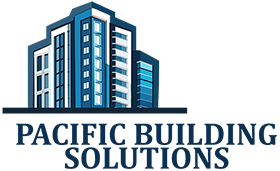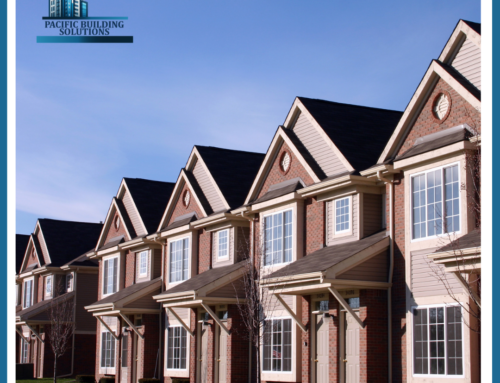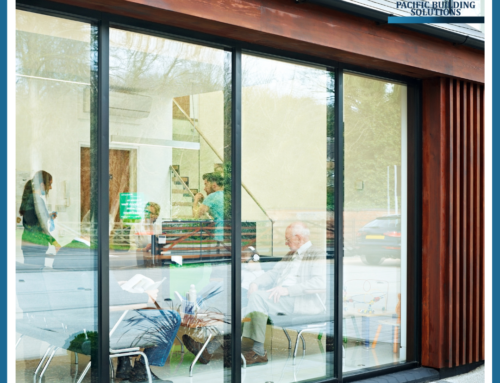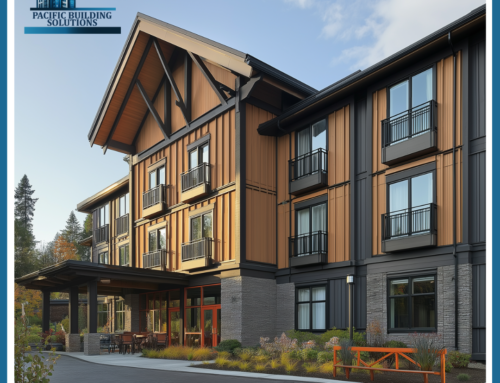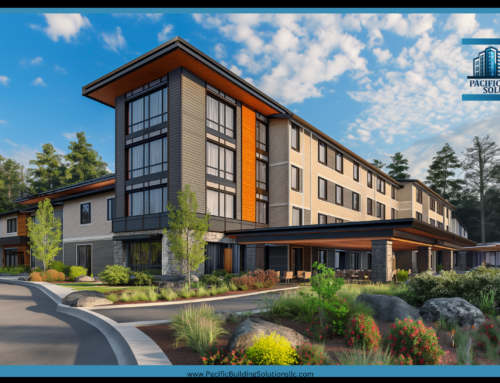Living in a multifamily building often comes with an unexpected challenge: noise. From loud neighbors to street sounds creeping into your apartment, unwanted noise can disrupt your peace of mind. The good news? Minimizing those sounds with a few well-chosen upgrades is easier than you think. At Pacific Building Solutions, we specialize in turning noisy environments into tranquil living spaces by implementing smart noise reduction strategies.
We will explore effective noise reduction techniques for multifamily buildings, from advanced window treatments to cutting-edge insulation. Whether building from scratch or renovating, these tips will help keep the noise at bay.

Why Noise Reduction Matters in Multifamily Buildings
When noise pollution invades your space, it impacts your quality of life. You might find it hard to sleep, work, or simply relax. This is particularly problematic in multifamily buildings where sound can easily travel between floors, walls, and windows.
Noise reduction isn’t just about comfort. Studies have shown excessive noise can raise stress levels and reduce cognitive function. Pacific Building Solutions ensures healthier, happier tenants and homeowners by focusing on noise control during construction or renovation.
Let’s break down the most effective methods for noise reduction, starting with windows and insulation.
1. Acoustic Window Treatments
Windows are often the biggest culprits for letting external noise in. Traditional single-pane windows cannot withstand city traffic or loud neighbors. Acoustic windows, however, can block out the majority of unwanted noise.

Benefits of Acoustic Windows:
- Double or triple-glazed glass layers.
- Noise reduction up to 40 decibels.
- Improved energy efficiency (a win for sound and insulation!).
At Pacific Building Solutions, we often recommend laminated acoustic glass to our clients. This type of window incorporates a special sound-absorbing interlayer, which makes it ideal for multifamily buildings.
Did you know that adding heavy curtains can reduce noise by 10 decibels? Drapes made from thick materials, like velvet, absorb sound and give you a quieter space!
2. Soundproof Doors: A Must-Have Upgrade
Many people overlook the importance of doors in noise reduction. Hollow-core doors allow sound to pass right through, making them a poor choice for multifamily buildings. Instead, opt for solid-core doors designed for soundproofing.
Why Solid-Core Doors Are Essential:
- Thicker construction reduces sound transmission.
- Sealing strips around the door frame further block out noise.
- Better thermal insulation properties.
For those wanting the ultimate quiet, we at Pacific Building Solutions recommend pairing solid-core doors with acoustic door seals. These seals close the gap between the door and frame, preventing noise from sneaking through.
3. Insulation: The Silent Savior
No conversation about noise reduction is complete without addressing insulation. It’s one of the most critical elements in keeping sound from traveling between walls and floors.
Top Insulation Options:
- Fiberglass insulation: Affordable, easy to install, and effective at absorbing noise.
- Spray foam insulation: Expands to fill gaps, ensuring there are no spaces where sound can leak through.
- Mineral wool insulation: Offers superior sound absorption while also being fire-resistant.
At Pacific Building Solutions, we work closely with clients to choose the right insulation material based on their building’s needs. Properly installed insulation creates a barrier that reduces noise and helps with energy efficiency.
4. Floor Underlayments: Stopping Noise in Its Tracks
Floors in multifamily buildings can become an unexpected source of noise, particularly when residents walk in hard-soled shoes or children play with toys. Installing a floor underlayment beneath carpets, wood, or tile can make a world of difference.
Types of Floor Underlayments:
- Rubber underlayment: Known for its durability and sound absorption qualities.
- Cork underlayment: A natural solution that absorbs vibrations.
- Foam underlayment: An affordable and effective choice for reducing impact noise.
Our Pacific Building Solutions team often recommends combining underlayment with soft flooring, such as carpets, for the best noise reduction in common areas or bedrooms.
5. Wall Panels: Turning Walls into Noise Barriers
If you have thin walls, soundproof panels can provide the extra soundproofing you need. These panels come in various designs, from basic foam to more aesthetic solutions that blend seamlessly into your decor.
Acoustic Wall Panel Features:
- Easy to install, with adhesive backing or mounting brackets.
- Available in a range of textures and colors.
- Effective at reducing echoes and preventing sound transmission.
These are excellent for shared walls in multifamily buildings, where one tenant’s noise can easily disturb their neighbor.
6. Sealant Solutions for Airborne Noise
Even the smallest gaps around windows, doors, or electrical outlets can allow noise to seep through. Specialized acoustic sealants are a quick and easy fix for this problem. Unlike regular caulk, acoustic sealants remain flexible and block sound transmission.
A gap of just 1% in a wall can reduce its effectiveness at blocking sound by up to 50%! That’s why sealing even the tiniest cracks is critical for proper soundproofing.
7. Acoustic Ceilings for Multifamily Comfort
Acoustic ceilings use sound-absorbing materials to minimize noise from upper floors. These systems can drastically reduce footstep noise, furniture movement, or even conversation sounds from above.
Benefits of Acoustic Ceilings:
- Reduces sound transmission between floors.
- Comes in various materials, including fiberglass and foam panels.
- Improves overall acoustic quality within a room.
Silence is Achievable
Reducing noise in multifamily buildings requires a combination of smart design choices, advanced materials, and attention to detail. Each technique outlined here can make a noticeable difference in your living environment from windows to insulation. At Pacific Building Solutions, we believe every building should be a haven of tranquility, no matter how noisy the outside world may be.
FAQs
Q: Can I soundproof an existing building, or do I need to start from scratch?
A: Absolutely! Retrofitting soundproofing techniques like acoustic windows, doors, and insulation can significantly reduce noise in an existing building.
Q: How effective is insulation in blocking sound?
A: Insulation plays a vital role. Fiberglass, mineral wool, and spray foam, depending on the type and installation method, can block up to 80% of noise.
Q: What’s the easiest way to reduce noise from my upstairs neighbors?
A: Installing acoustic ceiling tiles or soundproofing mats between floors can significantly reduce noise from upstairs.
With these techniques, your multifamily building can be peaceful and stylish.
Oregon Zip Codes Served:
Multnomah County
97019 (Corbett)
97024 (Fairview)
97030 (Gresham)
97080 (Gresham)
97201 (Portland)
97202 (Portland)
97203 (Portland)
97204 (Portland)
97205 (Portland)
Washington County
97006 (Aloha)
97007 (Aloha)
97106 (Banks)
97008 (Beaverton)
97005 (Beaverton)
97229 (Bethany)
97109 (Buxton)
97113 (Cornelius)
97116 (Forest Grove)
97117 (Gales Creek)
97119 (Gaston)
97123 (Hillsboro)
97124 (Hillsboro)
97125 (Manning)
97133 (North Plains)
97140 (Sherwood)
97223 (Tigard)
97224 (Tigard)
97144 (Timber)
97062 (Tualatin)
97225 (West Haven-Sylvan)
Clackamas County
97004 (Beavercreek)
97009 (Boring)
97013 (Canby)
97015 (Clackamas)
97017 (Colton)
97089 (Damascus)
97022 (Eagle Creek)
97023 (Estacada)
97027 (Gladstone)
97028 (Government Camp)
97086 (Happy Valley)
97034 (Lake Oswego)
97035 (Lake Oswego)
97222 (Milwaukie)
97038 (Molalla)
97067 (Mount Hood Village)
97011 (Mount Hood Village)
97049 (Mount Hood Village)
97042 (Mulino)
97267 (Oak Grove)
97045 (Oregon City)
97055 (Sandy)
97068 (West Linn)
97070 (Wilsonville)
Marion County
97325 (Aumsville)
97002 (Aurora)
97342 (Detroit)
97020 (Donald)
97317 (Four Corners)
97346 (Gates)
97026 (Gervais)
97305 (Hayesville)
97032 (Hubbard)
97350 (Idanha)
97352 (Jefferson)
97303 (Keizer)
97384 (Mehama)
97362 (Mount Angel)
97373 (Saint Benedict)
97137 (Saint Paul)
97301 (Salem)
97302 (Salem)
97306 (Salem)
97375 (Scotts Mills)
97381 (Silverton)
97383 (Stayton)
97385 (Sublimity)
97392 (Turner)
97071 (Woodburn)
Columbia County
97016 (Clatskanie)
97018 (Columbia City)
97054 (Deer Island)
97048 (Rainier)
97056 (Scappoose)
97051 (St. Helens)
97064 (Vernonia)
97053 (Warren)
Yamhill County
97101 (Amity)
97111 (Carlton)
97114 (Dayton)
97115 (Dundee)
97127 (Lafayette)
97128 (McMinnville)
97132 (Newberg)
97378 (Sheridan)
97396 (Willamina)
97148 (Yamhill)
